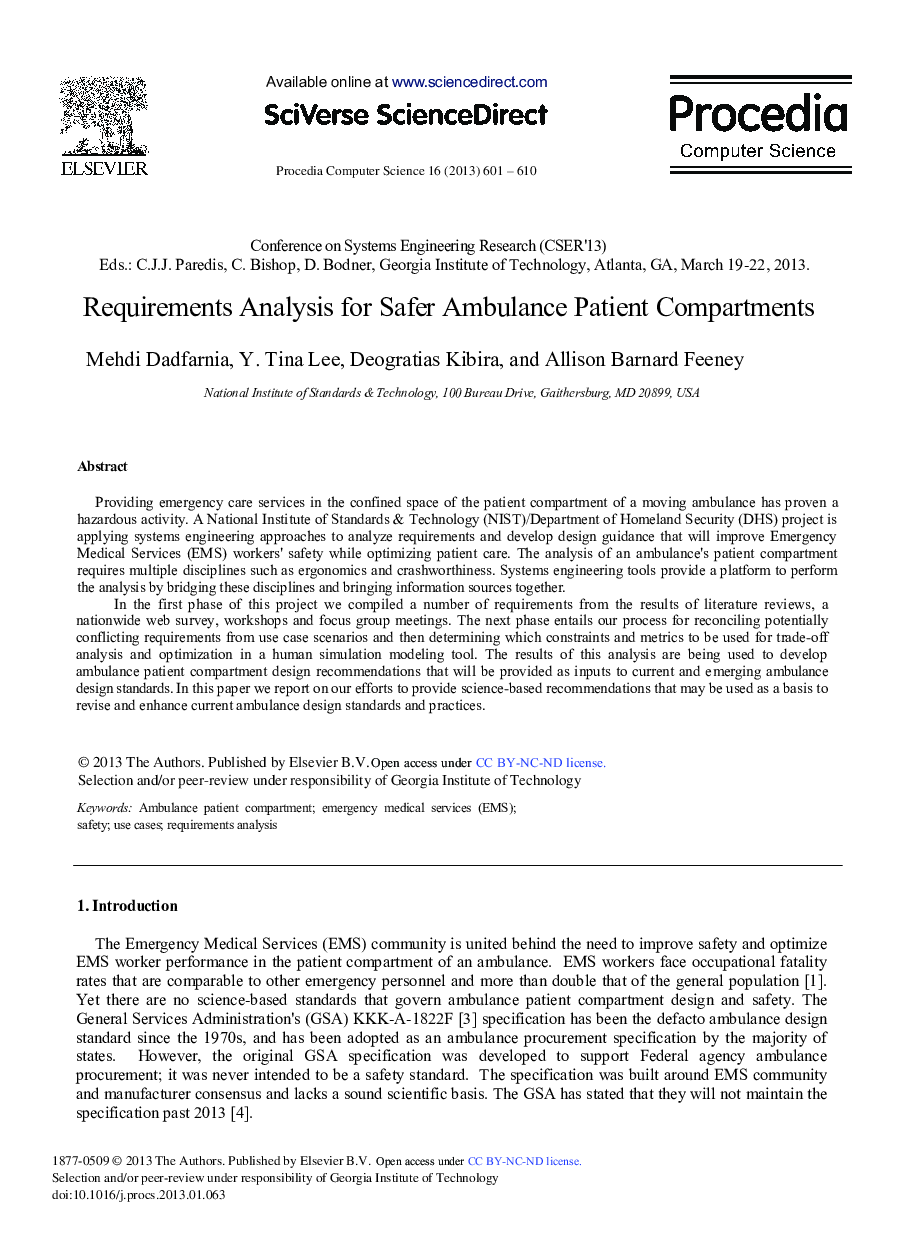| Article ID | Journal | Published Year | Pages | File Type |
|---|---|---|---|---|
| 486609 | Procedia Computer Science | 2013 | 10 Pages |
Providing emergency care services in the confined space of the patient compartment of a moving ambulance has proven a hazardous activity. A National Institute of Standards & Technology (NIST)/Department of Homeland Security (DHS) project is applying systems engineering approaches to analyze requirements and develop design guidance that will improve Emergency Medical Services (EMS) workers’ safety while optimizing patient care. The analysis of an ambulance's patient compartment requires multiple disciplines such as ergonomics and crashworthiness. Systems engineering tools provide a platform to perform the analysis by bridging these disciplines and bringing information sources together.In the first phase of this project we compiled a number of requirements from the results of literature reviews, a nationwide web survey, workshops and focus group meetings. The next phase entails our process for reconciling potentially conflicting requirements from use case scenarios and then determining which constraints and metrics to be used for trade-off analysis and optimization in a human simulation modeling tool. The results of this analysis are being used to develop ambulance patient compartment design recommendations that will be provided as inputs to current and emerging ambulance design standards. In this paper we report on our efforts to provide science-based recommendations that may be used as a basis to revise and enhance current ambulance design standards and practices.
